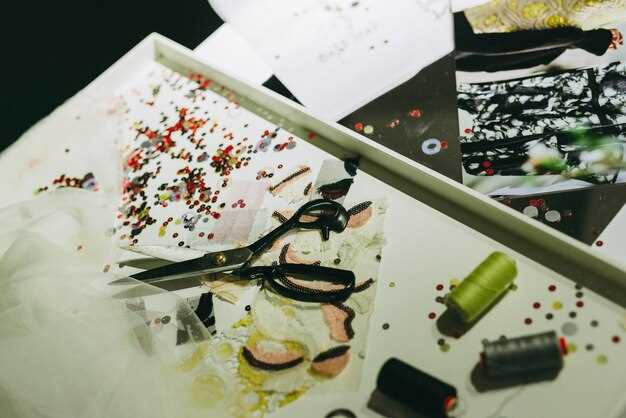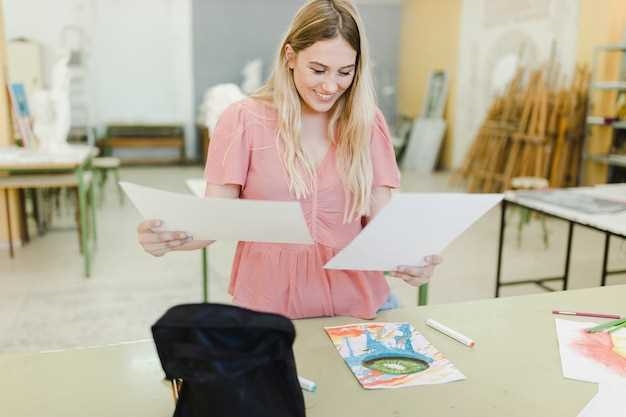Strategies for Preventing Art Theft and Recovering Stolen Works

Art, a timeless expression of human creativity, has captivated audiences for centuries. However, the allure of these masterpieces has also attracted the attention of individuals with nefarious intentions. The illicit trade of valuable artworks has become a global concern, prompting the need for comprehensive strategies to protect these cultural treasures.
In this article, we delve into the intricate world of art security, exploring innovative approaches to prevent the unauthorized acquisition and transport of valuable pieces. By implementing robust measures, art collectors, museums, and galleries can fortify their defenses against potential thefts, ensuring the preservation of our artistic heritage.
Moreover, we examine the complex process of recovering stolen artworks, shedding light on the tireless efforts of law enforcement agencies, private investigators, and art recovery specialists. Through meticulous investigations and international collaborations, these dedicated professionals employ a range of techniques to track down and repatriate stolen works, restoring them to their rightful owners.
Join us as we unravel the fascinating realm of art protection and recovery, exploring the strategies and tactics employed to safeguard our cultural heritage and preserve the beauty that enriches our lives.
Understanding the Global Art Theft Problem
In this section, we will delve into the intricate web of international art crime, exploring the complex dynamics and challenges associated with the illicit acquisition and trade of valuable artistic treasures. By examining the global art theft problem, we aim to gain a comprehensive understanding of the multifaceted issues surrounding the unauthorized appropriation and circulation of culturally significant artworks.
Throughout history, the world has witnessed a myriad of instances where priceless masterpieces have been unlawfully obtained and transported across borders, often disappearing into the shadows of the black market. This clandestine trade not only robs nations of their cultural heritage but also undermines the integrity of the art market, creating a lucrative underground economy fueled by greed and deception.
One of the key factors contributing to the global art theft problem is the high demand for stolen artworks, driven by a network of unscrupulous collectors, dealers, and criminals. These individuals exploit the allure of rare and valuable pieces, capitalizing on the desire for exclusivity and the potential for significant financial gain. The illicit trade in stolen art transcends geographical boundaries, making it a truly global issue that requires a coordinated international response.
Moreover, the lack of standardized regulations and protocols across countries further exacerbates the challenges associated with combating art theft. Varying legal frameworks, inconsistent law enforcement practices, and limited resources hinder the effective prevention and recovery of stolen works. To address this issue, a collaborative approach involving governments, law enforcement agencies, art institutions, and the public is crucial in developing comprehensive strategies to protect our cultural heritage.
By comprehending the complexities of the global art theft problem, we can begin to explore innovative solutions and proactive measures to safeguard artistic treasures for future generations. Through increased awareness, enhanced security measures, and international cooperation, we can strive towards a world where the illicit trade in stolen art is minimized, and stolen works are successfully recovered and returned to their rightful owners.
Securing Art Collections: Best Practices for Prevention
Ensuring the safety and protection of valuable artistic treasures is of utmost importance for collectors and institutions alike. This section explores effective strategies and guidelines to safeguard art collections from potential threats and risks.
Implementing Comprehensive Security Measures
Creating a secure environment for art collections involves a multi-faceted approach that encompasses various aspects of protection. Installing state-of-the-art alarm systems, surveillance cameras, and access control mechanisms can act as deterrents and provide real-time monitoring capabilities. Additionally, employing trained security personnel who are well-versed in handling and responding to potential security breaches is crucial.
Furthermore, implementing proper physical security measures such as secure display cases, reinforced doors, and windows with shatterproof glass can help prevent unauthorized access and minimize the risk of theft or damage. Regular security audits and assessments should be conducted to identify vulnerabilities and address them promptly.
Establishing a Thorough Documentation System
Accurate and detailed documentation is essential for the effective management and protection of art collections. Maintaining a comprehensive inventory that includes photographs, descriptions, provenance, and appraisal values of each artwork can aid in identification and recovery efforts in case of theft or loss. This information should be securely stored both physically and digitally, with restricted access to authorized personnel only.
Additionally, implementing a robust loan and exhibition tracking system can help track the movement of artworks, ensuring their safety during transportation and display. Regularly updating and reviewing documentation is crucial to account for any changes in the collection and to ensure the accuracy of records.
In conclusion, securing art collections requires a combination of advanced security measures, thorough documentation, and regular assessments. By implementing these best practices, collectors and institutions can significantly reduce the risk of theft or loss, providing peace of mind and preserving these valuable cultural assets for future generations.
Advanced Technology Solutions for Art Protection

In the realm of safeguarding valuable artistic creations, innovative technological advancements have emerged as powerful tools for enhancing security measures and protecting artwork from potential threats. This section explores cutting-edge solutions that employ state-of-the-art technology to ensure the safety and preservation of artistic masterpieces.
1. Smart Surveillance Systems
One of the most effective ways to deter theft and monitor artwork is through the implementation of smart surveillance systems. These systems utilize high-resolution cameras equipped with advanced image recognition algorithms to detect any suspicious activity in galleries, museums, or private collections. By constantly monitoring the surroundings, these systems can promptly alert security personnel in the event of unauthorized access or tampering.
2. RFID Tracking and Authentication
Radio Frequency Identification (RFID) technology has revolutionized the tracking and authentication of artwork. By embedding tiny RFID tags discreetly within the artwork, it becomes possible to monitor its location and movement in real-time. This technology enables art professionals to track the movement of valuable pieces, ensuring their safety during transportation or loan exhibitions. Additionally, RFID tags can be used to authenticate artwork, providing an additional layer of security against counterfeit pieces.
3. Virtual Reality for Art Display
Virtual Reality (VR) technology offers a unique opportunity to showcase and protect artwork in a digital environment. By creating immersive virtual galleries, art enthusiasts can experience and appreciate masterpieces without the need for physical presence. This not only allows for wider accessibility but also eliminates the risk of theft or damage to the original artwork. VR technology also enables the creation of detailed digital replicas, which can serve as backups in case of theft or destruction.
- Smart surveillance systems enhance security measures through advanced image recognition algorithms.
- RFID tracking and authentication technology enables real-time monitoring and authentication of artwork.
- Virtual Reality provides a digital platform for displaying and safeguarding artwork.
By embracing these advanced technology solutions, the art world can significantly reduce the risk of theft, enhance recovery efforts, and ensure the long-term preservation of invaluable artistic treasures.
The Role of Art Institutions in Preventing Art Theft
Art institutions play a crucial role in safeguarding the cultural heritage and preserving the integrity of artistic creations. By implementing comprehensive security measures and fostering a culture of vigilance, these institutions contribute significantly to the prevention of art theft.
1. Promoting Awareness: Art institutions have the responsibility to educate the public about the value and significance of art, as well as the potential risks associated with theft. Through exhibitions, workshops, and educational programs, they raise awareness about the importance of protecting artworks and the consequences of art theft.
2. Implementing Security Measures: Art institutions employ various security measures to deter theft and ensure the safety of artworks. These measures may include state-of-the-art surveillance systems, alarm systems, secure display cases, and restricted access to sensitive areas. By investing in advanced technology and expert security personnel, institutions create a formidable defense against potential theft.
3. Collaboration with Law Enforcement: Art institutions collaborate closely with law enforcement agencies to combat art theft. They provide valuable information, such as detailed documentation and provenance records, to aid in the recovery of stolen artworks. By establishing strong partnerships with law enforcement, institutions contribute to the successful investigation and prosecution of art thieves.
4. International Cooperation: Art institutions recognize the global nature of art theft and actively participate in international efforts to prevent and recover stolen artworks. They collaborate with other institutions, organizations, and governments to share information, coordinate efforts, and implement effective strategies. Through international cooperation, institutions enhance their ability to combat art theft on a global scale.
5. Proactive Risk Assessment: Art institutions conduct regular risk assessments to identify vulnerabilities and implement appropriate measures to mitigate potential threats. By staying updated on emerging security technologies and best practices, institutions can adapt their security protocols to address evolving risks effectively.
6. Ethical Acquisition and Display: Art institutions adhere to ethical standards in acquiring and displaying artworks. By conducting thorough due diligence and verifying the provenance of artworks, institutions contribute to the prevention of art theft. Additionally, by displaying artworks in a secure and responsible manner, institutions minimize the opportunities for theft.
7. Public-Private Partnerships: Art institutions forge partnerships with private entities, such as insurance companies and art collectors, to enhance security measures and share resources. These collaborations facilitate the exchange of expertise, information, and financial support, strengthening the overall protection of artworks.
Through their multifaceted efforts, art institutions serve as guardians of cultural heritage and play a vital role in preventing art theft. By raising awareness, implementing robust security measures, collaborating with law enforcement, engaging in international cooperation, conducting risk assessments, adhering to ethical standards, and forming partnerships, these institutions contribute significantly to the safeguarding of artistic treasures for future generations.
International Cooperation in Art Recovery Efforts
Collaboration on a global scale plays a crucial role in the successful retrieval of stolen artworks and the prevention of their illicit trade. The concerted efforts of nations, organizations, and individuals across borders are essential in safeguarding cultural heritage and ensuring the return of valuable artistic treasures to their rightful owners.
Enhancing international cooperation
Efforts to combat art theft and facilitate the recovery of stolen works require strong international cooperation. This involves fostering partnerships between law enforcement agencies, art institutions, and governments worldwide. By sharing information, resources, and expertise, countries can collectively address the challenges posed by art theft and work towards effective solutions.
Interpol and its role
Interpol, the international police organization, plays a significant role in coordinating global efforts to combat art theft. Through its specialized unit, the Works of Art unit, Interpol facilitates the exchange of information and intelligence among member countries. This collaboration enables law enforcement agencies to identify stolen artworks, track their movements, and apprehend individuals involved in their illicit trade.
International databases and registries
The establishment and maintenance of international databases and registries are crucial tools in art recovery efforts. These platforms allow for the centralized documentation and dissemination of information about stolen artworks, making it easier for law enforcement agencies, art professionals, and collectors to identify and recover stolen pieces. The use of advanced technologies, such as image recognition software, enhances the effectiveness of these databases in matching stolen works with their rightful owners.
Legal frameworks and extradition treaties
International cooperation in art recovery efforts is further strengthened through the development and implementation of robust legal frameworks and extradition treaties. These legal mechanisms provide a framework for cooperation between countries in investigating and prosecuting art thieves, as well as facilitating the return of stolen artworks. Mutual legal assistance agreements and extradition treaties ensure that criminals involved in art theft can be brought to justice, regardless of their location.
Public awareness and education
Engaging the public and raising awareness about art theft and recovery efforts are vital components of international cooperation. By educating individuals about the importance of cultural heritage and the consequences of art theft, societies can contribute to the prevention of such crimes. Public campaigns, exhibitions, and educational programs help foster a sense of responsibility and encourage individuals to report suspicious activities or the presence of stolen artworks.
In conclusion, international cooperation in art recovery efforts is essential for effectively combating art theft and ensuring the return of stolen works. Through collaboration, the global community can protect cultural heritage, preserve artistic treasures, and uphold the principles of justice and rightful ownership.
Legal Challenges and Strategies in Art Repatriation
When it comes to the return of cultural heritage, there are numerous legal challenges and strategies that come into play. This section explores the complex legal landscape surrounding the repatriation of artworks and the various approaches taken to address these challenges.
1. International Legal Framework
One of the primary legal challenges in art repatriation is navigating the international legal framework. This involves understanding and applying international conventions, treaties, and agreements that govern the restitution of cultural property. These legal instruments provide a basis for countries to assert their claims and seek the return of stolen or illegally exported artworks.
2. Ownership and Provenance Research
Another crucial aspect of art repatriation is establishing ownership and provenance. Provenance research involves tracing the history of an artwork, including its ownership, custody, and location over time. This research helps determine whether an artwork was unlawfully acquired or looted during times of conflict or colonial rule. Establishing a strong case for repatriation often requires extensive research and collaboration between art historians, legal experts, and relevant institutions.
Furthermore, legal strategies for art repatriation may involve negotiating with current possessors or institutions holding the artworks. This can include diplomatic efforts, mediation, or legal proceedings to assert the rightful ownership and request the return of the stolen or unlawfully acquired artworks.
3. Cultural Heritage Laws and Domestic Legislation
Each country has its own set of cultural heritage laws and domestic legislation that govern the repatriation of artworks. These laws vary in their scope, definitions, and procedures, making the legal landscape complex and challenging. Understanding and navigating these laws is crucial for successful art repatriation efforts.
Additionally, legal strategies may involve advocating for changes in domestic legislation to strengthen the legal framework for art repatriation. This can include lobbying for the adoption of stricter regulations, extending the statute of limitations for claims, or implementing mechanisms for dispute resolution.
- Collaboration with Interpol and Law Enforcement Agencies
- Public Awareness and Education
- Alternative Dispute Resolution
- Restitution Agreements and Exchanges
In conclusion, art repatriation involves navigating a complex legal landscape. Understanding the international legal framework, conducting thorough provenance research, and working within domestic legislation are key strategies in the pursuit of repatriating stolen or unlawfully acquired artworks. Collaboration, public awareness, and alternative dispute resolution mechanisms also play crucial roles in addressing the legal challenges associated with art repatriation.


